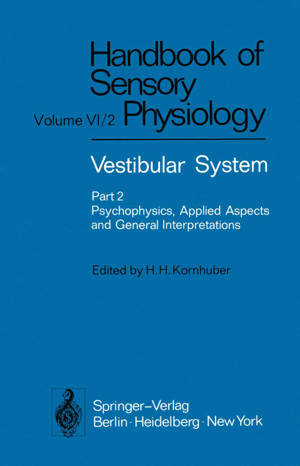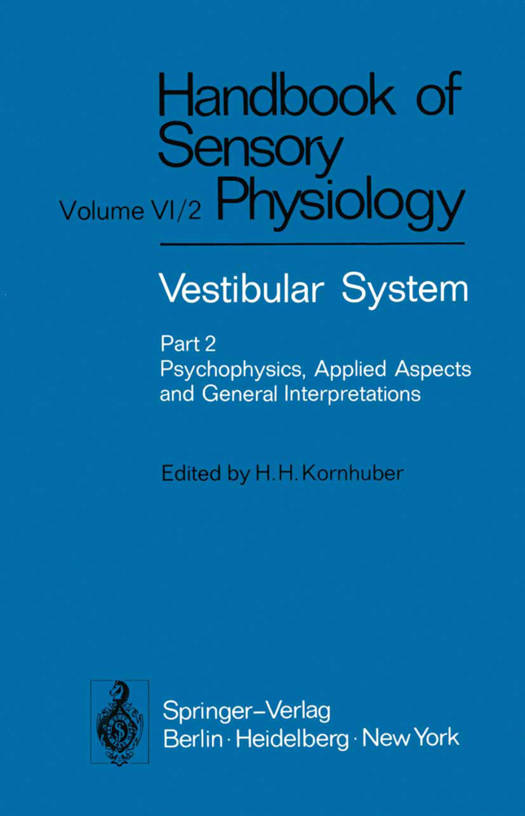
- Afhalen na 1 uur in een winkel met voorraad
- Gratis thuislevering in België vanaf € 30
- Ruim aanbod met 7 miljoen producten
- Afhalen na 1 uur in een winkel met voorraad
- Gratis thuislevering in België vanaf € 30
- Ruim aanbod met 7 miljoen producten
Zoeken
Vestibular System Part 2: Psychophysics, Applied Aspects and General Interpretations
€ 177,45
+ 354 punten
Omschrijving
The function of the vestibular system is not as obvious as those of vision, hearing, touch or smell. Vestibular dysfunction, however, is clearly apparent where lesions are present. It is probably for this reason that the vestibular sense was not discovered until the nineteenth century and that clinicians have continued to playa major role in basic vestibular research right up to the present. The relationship between basic and clinical research is certainly stronger in the vesti- bular field than in that of tactile sensation, for instance, as testified by the work of clinicians as MENIERE, BREUER, BARANY, DEKLEIJN and FRENZEL. In this respect the situation is similar in vestibular physiology and in endocrinology, and for the same reason. This second part of the vestibular volume of the Handbook of Sensory Physio- logy will be of interest to neurologists, otologists, neurosurgeons, ophthalmologists and physiotherapists on the one hand, and psychologists, physiologists, engineers and aviation specialists on the other. For a full understanding of Part 2, it is necessary to have assimilated the basic anatomy, physiology, and biochemistry of Part 1.
Specificaties
Betrokkenen
- Uitgeverij:
Inhoud
- Aantal bladzijden:
- 684
- Taal:
- Engels
- Reeks:
- Reeksnummer:
- nr. 6
Eigenschappen
- Productcode (EAN):
- 9783642659225
- Verschijningsdatum:
- 1/03/2012
- Uitvoering:
- Paperback
- Formaat:
- Trade paperback (VS)
- Afmetingen:
- 170 mm x 244 mm
- Gewicht:
- 1088 g

Alleen bij Standaard Boekhandel
+ 354 punten op je klantenkaart van Standaard Boekhandel
Beoordelingen
We publiceren alleen reviews die voldoen aan de voorwaarden voor reviews. Bekijk onze voorwaarden voor reviews.







